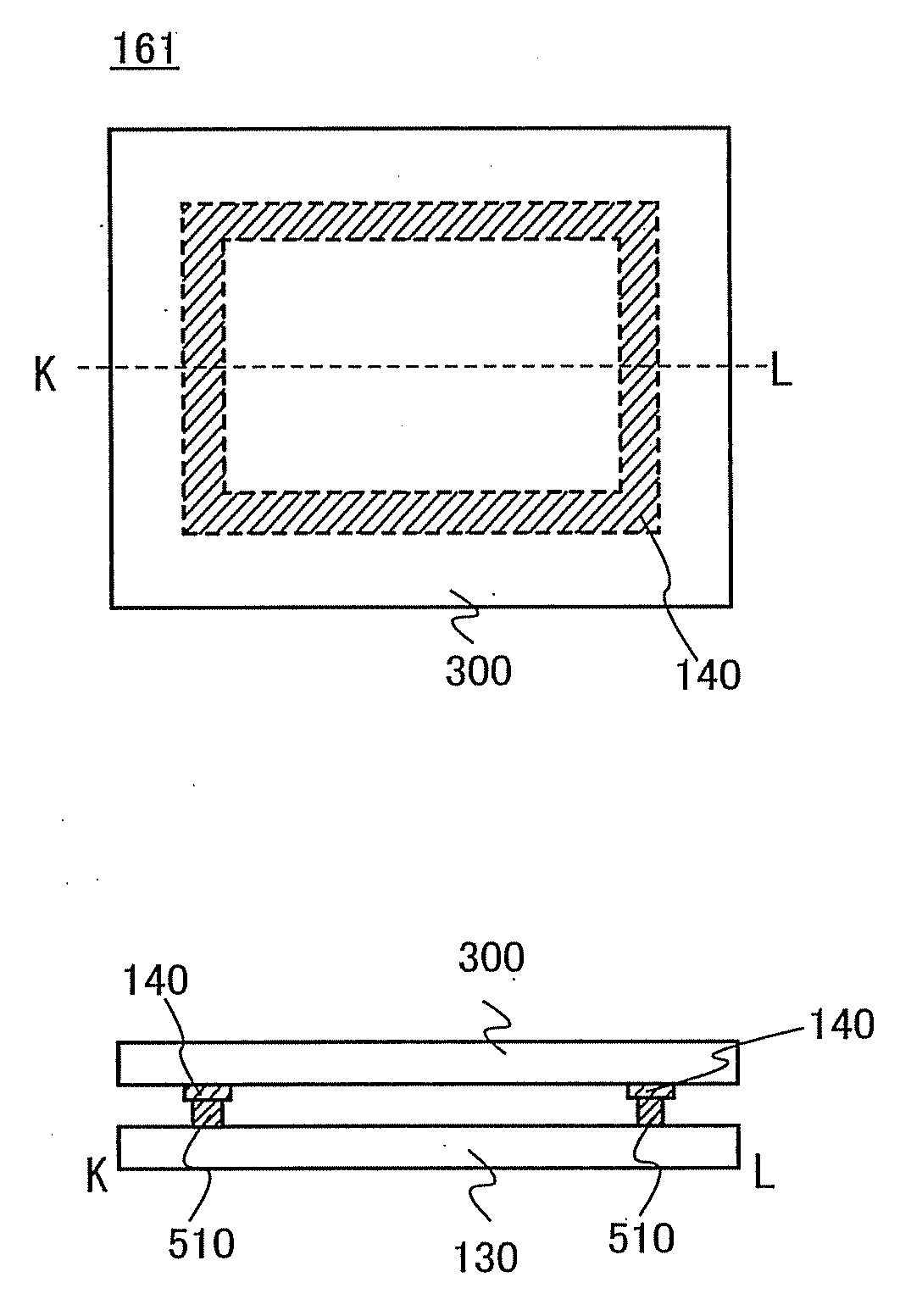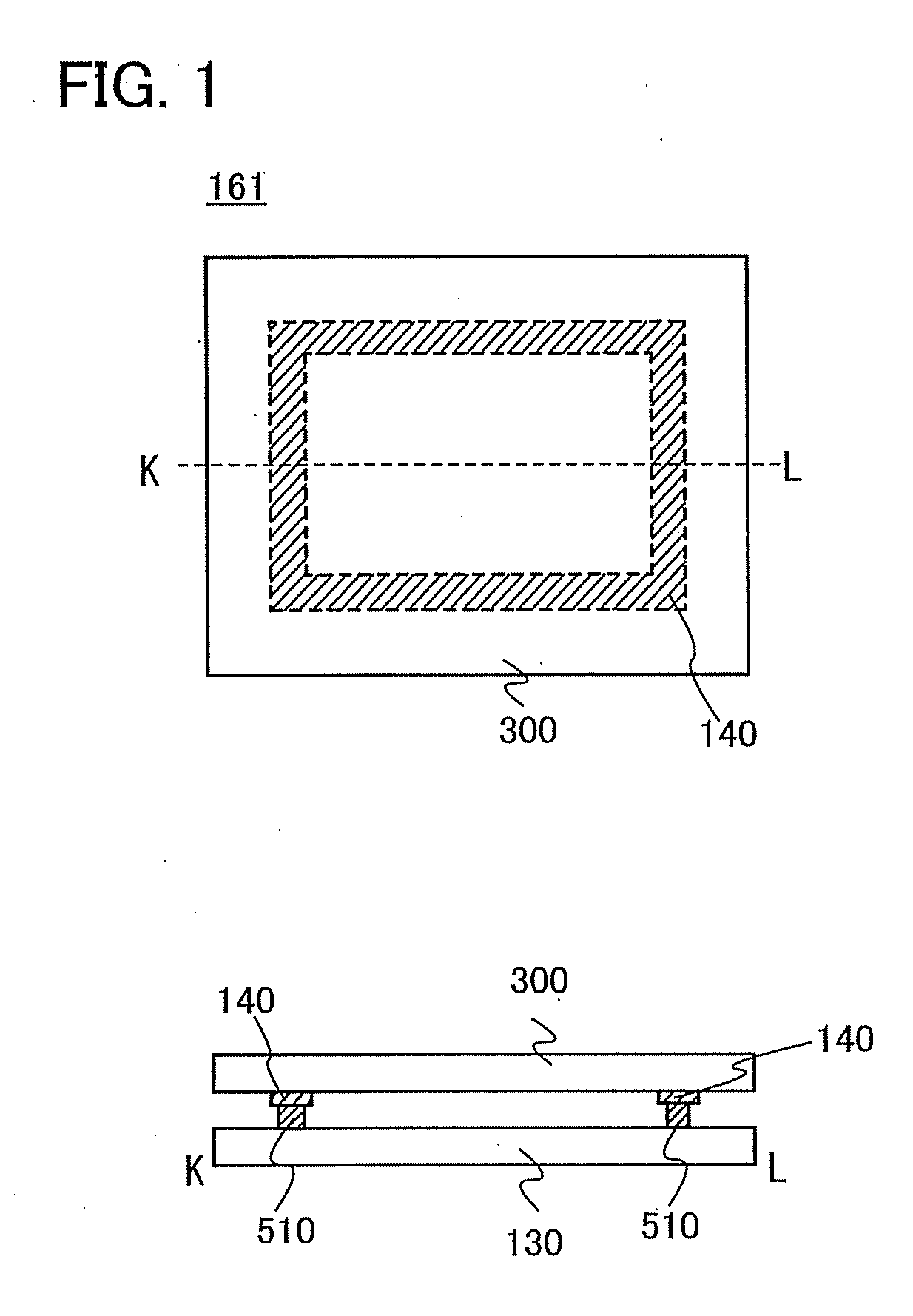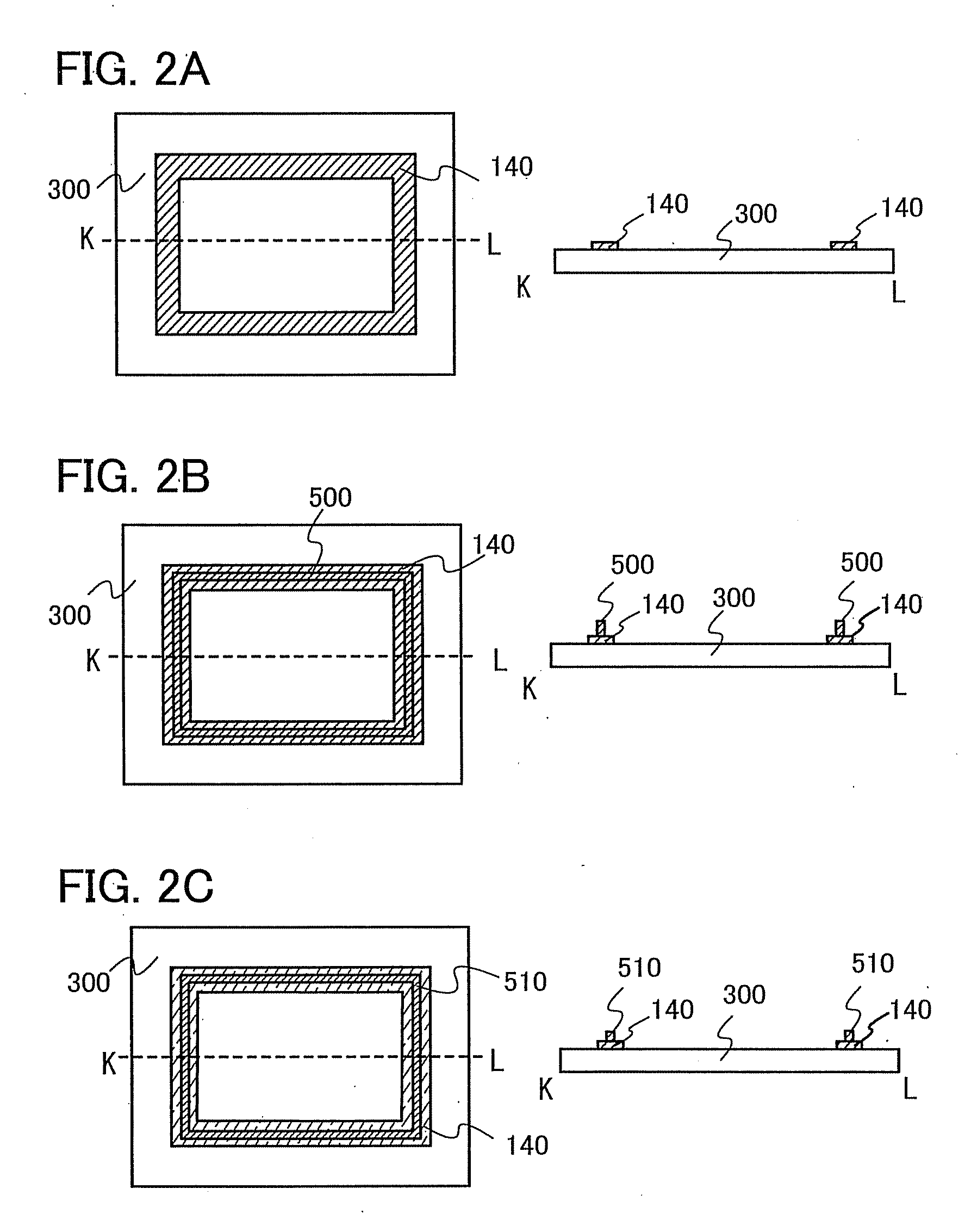Method of manufacturing light-emitting device
a technology of light-emitting devices and manufacturing methods, which is applied in the direction of glass making apparatus, glass reforming apparatus, manufacturing tools, etc., can solve the problems of reducing the intensity of bonding of the sealed structure, and affecting the sealing performance of the glass substrate, so as to achieve high reliability and light-emitting devices. high, the effect of excellent hermeticity
- Summary
- Abstract
- Description
- Claims
- Application Information
AI Technical Summary
Benefits of technology
Problems solved by technology
Method used
Image
Examples
embodiment 1
[0062]In this embodiment, the way how a sealed structure 161 illustrated in FIG. 1 is manufactured using a manufacturing method according to one embodiment of the present invention is described with reference to FIGS. 2A to 2C and FIG. 3.
Forming Buffer Layer
[0063]First, a buffer layer 140 is formed over a second substrate 300. For the second substrate 300, glass is used here, but other materials can be used as long as the second substrate 300 is capable of transmitting laser light because later-described laser light irradiation is performed through the second substrate 300.
[0064]For a film which forms the buffer layer 140, silicon oxide or silicon nitride can be used. A silicon oxide film or a silicon nitride film is formed by a plasma CVD method. In order to reduce a tensile stress generated in the second substrate 300 by the later-described laser light irradiation, the buffer layer 140 has a compressive stress.
[0065]The buffer layer 140 is formed in a region where a glass frit lay...
embodiment 2
[0074]In this embodiment, the way how a sealed structure 162 illustrated in FIG. 4 is manufactured using a manufacturing method according to one embodiment of the present invention is described with reference to FIG. 5 and FIG. 6.
Forming Buffer Layer
[0075]First, a buffer layer 150 is formed over a second substrate 300. For the second substrate 300, glass is used here, but other materials can be used as long as the second substrate 300 is capable of transmitting laser light because the later-described laser light irradiation is performed through the second substrate 300.
[0076]The buffer layer 150 is formed in a region where the glass frit layer 510 is to be formed (FIG. 5). The buffer layer 150 can be formed by a known technique, for example, formed by etching with a resist mask formed using a photomask.
[0077]A film which forms the buffer layer 150 can be formed with a substance which absorbs laser light and has a higher melting point than glass. Specifically, silicon, an insulator s...
embodiment 3
[0093]In this embodiment, one mode of a method of manufacturing a light-emitting device 163 illustrated in FIG. 7 is described with reference to FIGS. 8A and 8B and FIGS. 9A to 9D. In this embodiment, an organic EL element is adapted as one mode of the light-emitting element.
Forming Buffer Layer
[0094]First, the buffer layer 140 is formed over the second substrate 300. For the second substrate 300, although glass is used, other materials can be used as long as the second substrate 300 is capable of transmitting laser light because later-described laser light irradiation is performed through the second substrate 300. The buffer layer 140 is formed in a region where the glass frit layer 510 is to be formed. The buffer layer 140 is formed over the second substrate 300 so that the buffer layer 140 is located to surround the organic EL element 125 when viewed from the top in the state where the second substrate 300 and the first substrate 130 are bonded. The pattern of the buffer layer 14...
PUM
| Property | Measurement | Unit |
|---|---|---|
| temperature | aaaaa | aaaaa |
| wavelength | aaaaa | aaaaa |
| thickness | aaaaa | aaaaa |
Abstract
Description
Claims
Application Information
 Login to View More
Login to View More - R&D
- Intellectual Property
- Life Sciences
- Materials
- Tech Scout
- Unparalleled Data Quality
- Higher Quality Content
- 60% Fewer Hallucinations
Browse by: Latest US Patents, China's latest patents, Technical Efficacy Thesaurus, Application Domain, Technology Topic, Popular Technical Reports.
© 2025 PatSnap. All rights reserved.Legal|Privacy policy|Modern Slavery Act Transparency Statement|Sitemap|About US| Contact US: help@patsnap.com



